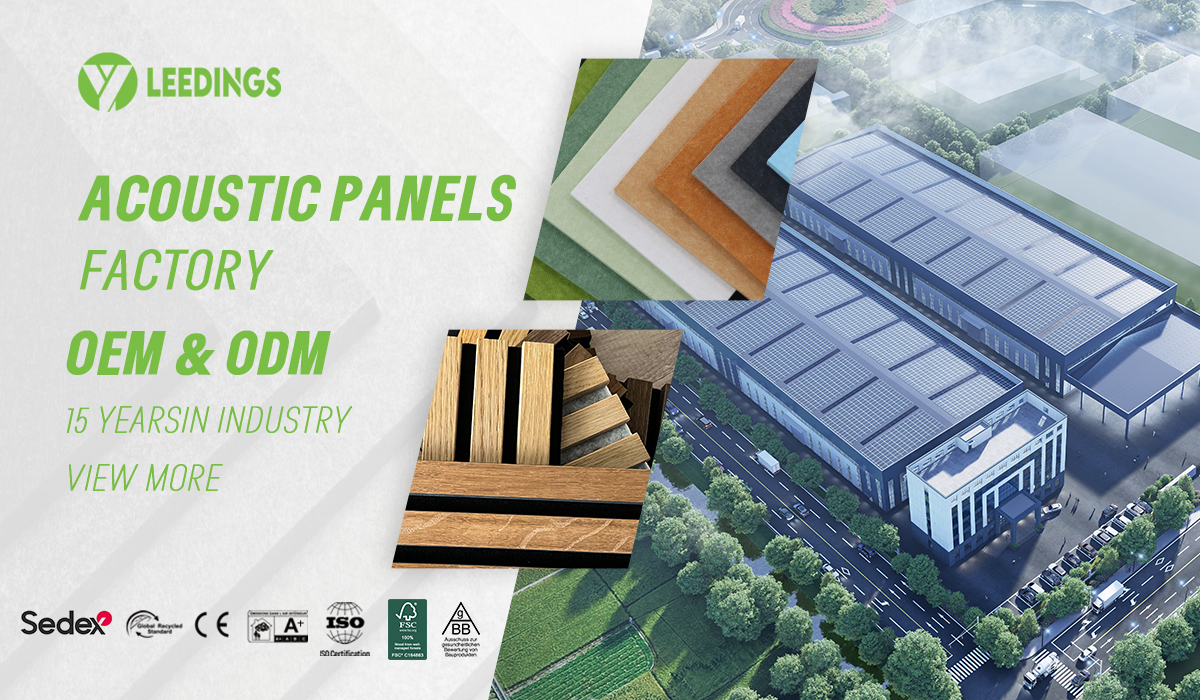Wood slat acoustic panels—commonly known as Akupanels—have become one of the most popular interior acoustic solutions for offices, homes, studios, and commercial environments. Their modern Scandinavian look, combined with real acoustic performance, makes them a favorite among designers and architects.
But how do Akupanels actually absorb sound? And what determines their NRC (Noise Reduction Coefficient)?
In this guide, we break down the science behind NRC in Akupanels and explain why slat spacing, felt density, and panel construction matter more than you may think.
What Is NRC in Akupanels?
NRC (Noise Reduction Coefficient) is a value between 0 and 1 indicating how much sound a material absorbs.
NRC 0 = no absorption (full reflection)
NRC 1 = full absorption
Typical Akupanels achieve NRC 0.75–0.95 when properly installed—an impressive result for panels that also serve as aesthetic wall cladding.
But unlike flat PET acoustic panels, Akupanels rely on a hybrid structure:
Wood slats for diffusion
PET felt backing for absorption
Air cavity behind the panel
These three elements interact to determine the final acoustic performance.

1. Slat Spacing: More Than Just a Design Choice
Why slat spacing affects NRC
The gaps between the wood slats allow sound waves to pass through and reach the PET felt behind them. If the spacing is too narrow, less sound enters; if too wide, mid–high frequencies may not diffuse properly.
Ideal slat spacing
Most high-performing Akupanels use spacing around:
13–18 mm gap width
27 mm slat width
This creates a repeating pattern that:
✔ breaks up reflections
✔ allows sound waves to travel through the slats
✔ enhances diffusion in mid and high frequencies
What happens if slat spacing changes?
| Slat Spacing | Result |
|---|---|
| Narrow gaps | Better diffusion, slightly lower absorption |
| Wider gaps | Higher absorption but less visual uniformity |
| No gaps (solid panels) | Very low NRC — mostly reflective |
Conclusion:
Slat spacing is not just about aesthetics—it determines how much sound reaches the acoustic felt and shapes the sound diffusion pattern.

2. The PET Felt Backing: The Heart of Sound Absorption
While wood slats contribute to diffusion, most of the absorption in Akupanels comes from the PET felt.
Key properties that affect performance:
Felt Density
Low density → sound passes through too easily → lower absorption
High density → better airflow resistance → higher absorption
Akupanels generally use PET felt with:
Density 1200–2400 gsm
Thickness 8–12 mm
This density range provides the ideal sound absorption curve, especially for speech frequencies (500–2000 Hz).
Felt Thickness
Thicker felt = deeper sound penetration = better NRC.
Color & Composition
Dark felt (usually black or charcoal) is common because:
It hides shadows behind slats
It absorbs more light → visually cleaner
But acoustically, the key factor is density, not color.
3. The Air Gap Behind Akupanels: A Free NRC Upgrade
Mounting Akupanels with an air cavity greatly improves NRC—sometimes from 0.55 (direct mount) to 0.95 (with 20–40 mm air gap).
Why the air cavity matters
The air gap acts as:
a resonant chamber
an extended acoustic zone
a trap for low-frequency energy
Low and mid frequencies (125–500 Hz), which are normally harder to absorb, benefit the most.
How These Three Factors Work Together
High-quality Akupanels achieve excellent NRC because:
✔ Slats break and scatter reflections
✔ Gaps allow sound to reach the felt
✔ Felt absorbs mid–high frequencies
✔ Air gap enhances low-frequency absorption
This hybrid mechanism explains why Akupanels perform far better than decorative wooden panels without felt.
Real NRC Performance of Akupanels
Typical test results (depending on brand and configuration):
| Installation Style | NRC |
|---|---|
| Directly on wall | 0.50–0.70 |
| With 20 mm air gap | 0.75–0.90 |
| With 40 mm air gap | 0.90–0.95 |
Leedings Akupanels, made with recycled PET felt + FSC-certified wood, consistently reach NRC levels demanded by modern workspaces, schools, and hospitality environments.
How to Choose Akupanels Based on NRC Needs
| Space Type | Recommended NRC | Suggested Akupanel Setup |
|---|---|---|
| Home living rooms | 0.60–0.75 | Direct mount |
| Office meeting rooms | 0.75–0.90 | 20–30mm air gap |
| Restaurants & cafés | 0.80–0.95 | Air gap + ceiling application |
| Studios / podcast rooms | 0.90+ | Thick felt + strategic placement |

Conclusion: Why Slat Spacing and Felt Matter
Akupanels are more than decorative wall panels. Their ability to reach high NRC values is the result of:
precise engineering
optimized slat spacing
high-density PET felt
strategic mounting
By understanding how these factors work together, designers and installers can choose the right Akupanels for maximum acoustic performance.

